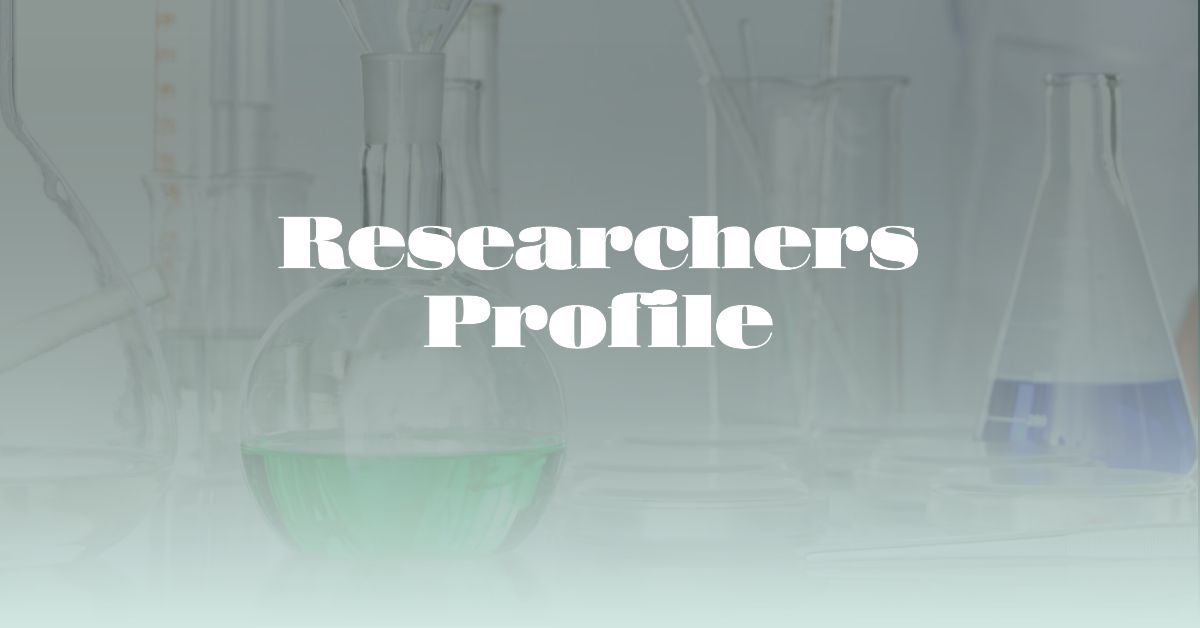Research visibility is a critical aspect of the contemporary academic
landscape, wherein the dissemination and recognition of scholarly work
play an important role. It refers to the extent to which research
findings are accessible, discoverable, and acknowledged by relevant
audiences, including fellow researchers, industry professionals,
policymakers, students, and the general public.
The enhancement of research visibility may foster broader engagement
and collaboration within the scientific community. At the same time,
researchers can connect with like-minded peers, facilitate the exchange
of knowledge, and stimulate the development of new ideas and
innovations. Additionally, enhanced research visibility leads to
increased citations, which contribute to the academic impact and
reputation of researchers and their affiliated institutions.
To enhance research visibility, researchers must proactively develop
comprehensive strategies. This may involve social media to engage with
audiences, participating in academic conferences, collaborating with the
media to promote research findings, or adopting open access publishing
practices. The following are some of the strategies you can take to
enhance the visibility of your research.
Make your work open access
To make your research open access, which means freely accessible to
anyone without paywalls or subscription barriers, you can follow these
simple steps:
Choose an open access journal. Look for reputable
open access journals in your field. These journals publish articles that
are immediately available to readers without any access restrictions.
You can search for open access journals using directories like the
Directory of Open Access Journals (DOAJ) or consult your colleagues and
mentors for recommendations.
Use preprint servers. Consider posting your research
findings on preprint servers such as arXiv, bioRxiv, or SSRN that allow
researchers to share their work openly and receive feedback from the
scientific community before final publication.
Consider self-archiving in institutional repositories.
Check if your institution has a repository and familiarize yourself
with their policies and guidelines regarding open access. Self-archiving
allows you to make your research accessible while still publishing in
traditional journals.
Sign author’s agreement and copyright. When
submitting your paper to a journal, carefully review the author’s
agreement or copyright transfer agreement. Ensure that you retain the
right to self-archive your work in institutional repositories or on
preprint servers. Negotiate with the journal if necessary to retain your
rights to make your research openly accessible.
Consider using Creative Commons (CC) licenses. CC
licenses allow you to specify the permissions and restrictions on how
others can use, share, and build upon your work. These licenses make it
clear that your research is openly available while still protecting your
intellectual property rights.

Set up and maintain researcher profile
Setting up and maintaining researcher profiles can greatly enhance
your visibility and help you present your research. To creating and
maintain effective researcher profiles you must think of the following:
Choose relevant platforms. Identify the platforms
that are widely used in your field for researcher profiling, such as
Google Scholar, ResearchGate, ORCID, LinkedIn, or institutional
repositories. Each platform has its own features and audience, so select
those that align with your goals and target audience
Create an ORCID Identifier. ORCID (Open Researcher
and Contributor ID) is a unique identifier that distinguishes you from
other researchers and helps connect your research outputs. Register for
an ORCID ID, which you can use across multiple platforms to link your
research and ensure accurate attribution
Set up profiles on selected platforms. Create
accounts on the selected platforms and follow their guidelines for
profile creation. Pay attention to profile fields and formatting
options, and ensure consistency across platforms. Add your personal
information, academic history, research interests, and affiliations
Upload publications. Add your publications to your
profiles. For some platforms, you may need to manually enter the
details, while others can automatically fetch your publications from
databases like PubMed or Scopus. Include preprints, conference papers,
book chapters, and any other relevant research outputs. Upload full-text
documents or provide links to the published versions.
Keep profiles up to date. Regularly update your
profiles to reflect your latest achievements and publications. Update
your contact information, affiliations, publications, and research
projects.
Monitor metrics and impact. Track the metrics
associated with your profiles, such as citation counts, views, and
downloads of your publications. This data can provide insights into the
impact of your research and help you understand your audience. Some
platforms offer analytics tools or integrate with external tools like
Altmetric or PlumX for comprehensive impact tracking.
Promote and share your profiles. Promote your
researcher profiles through various channels, including your personal
website, social media, email signature, and professional networking
events. Include links to your profiles in your publications and
presentations. Actively sharing your profiles helps increase your
visibility and encourages others to connect with and cite your work.
Create a blog to share your research
Creating a blog as a researcher can be an effective way to share your
research and experiences with a broader audience. It concerns the
following:
Define your blog’s purpose. Clarify the purpose of your blog. Identifying your target audience will help shape your content and communication style.
Choose a blogging platform. Select a user-friendly
blogging platform that suits your needs. Popular options include
WordPress, Blogger, Medium, or Ghost. Consider factors like
customization options, ease of use, community engagement features, and
the ability to integrate multimedia content.
Plan your content. Develop a content plan to ensure
consistency and coherence in your blog posts. Outline potential topics,
consider the frequency of your posts, and create a content calendar to
maintain a regular publishing schedule.
Create engaging content. Start writing and
publishing blog posts. Ensure your content is well-researched,
informative, and accessible to a diverse audience. Incorporate engaging
visuals, such as images, graphs, or infographics, to enhance the
readability of your posts.
Encourage interaction and feedback. Enable comments
on your blog posts to encourage reader engagement and feedback. Respond
to comments promptly and engage in discussions to foster a sense of
community.
Promote your blog. Actively promote your blog to
expand your readership. Share your blog posts on social media channels,
academic forums, and relevant professional networks. Consider guest
posting on other blogs or collaborating with fellow researchers to
increase exposure. Engage with the research community by commenting on
and sharing other researchers' blogs.
Monitor analytics. Utilize analytics tools provided
by your blogging platform to track key metrics such as page views,
engagement rates, and popular content. Analyzing these metrics will help
you understand your audience’s preferences and adjust your content
strategy accordingly.
Make your publication easy to find
To make your publications easier to find and increase their discoverability, you can follow these strategies:
Optimize titles and abstracts. Craft clear,
descriptive, and informative titles for your publications. Use keywords
that accurately represent the content and relevance of your research.
Similarly, write comprehensive and concise abstracts that summarize the
key findings and contributions of your work. Including relevant keywords
in the abstract can improve search engine indexing and retrieval.
Use standardized metadata. Ensure that your
publications have standardized and consistent metadata. This includes
information such as author names, affiliations, publication date,
keywords, and subject classifications. Consistency in metadata helps
search engines, indexing databases, and academic platforms to accurately
index and categorize your publications.
Utilize relevant keywords. Identify and incorporate
relevant keywords throughout your publication. Consider the specific
terminology, concepts, and phrases that researchers in your field are
likely to use when searching for related work.
Choose appropriate journals and databases. Publish
your work in reputable journals and databases that are widely used and
recognized in your field. High-impact factor journals and indexing
databases can increase the visibility and accessibility of your research
to a larger audience. Be mindful of selecting journals that align with
the scope and focus of your research.
Utilize social media and academic networks. Leverage
social media platforms and academic networking sites like ResearchGate,
Academia.edu, or LinkedIn to promote and share your publications.
Regularly post about your work, highlight key findings, and engage with
discussions related to your research field. Engaging with colleagues and
followers can help increase the visibility of your publications.
Engage with the media. Communicate your research
findings to the broader public by engaging with the media. Write press
releases or summaries of your work in accessible language and share them
with journalists or science communication platforms. Increased media
coverage can lead to wider dissemination of your research and enhance
its visibility.
Monitor citations and metrics. Keep track of
citations and other metrics related to your publications using tools
like Google Scholar, Scopus, or Web of Science. Monitoring citations can
provide insights into the impact and reach of your research. Analyzing
these metrics helps you understand which publications are gaining
traction and informs future research strategies.
Engage in research networking communities
Engaging in research networking communities is crucial for building
connections, sharing knowledge, and fostering collaborations with fellow
researchers. Study the following effective strategies to engage in
research networking communities:
Join online platforms. Register and create profiles
on online platforms specifically designed for research networking, such
as ResearchGate, Academia.edu, LinkedIn, or Mendeley. These platforms
allow you to connect with researchers in your field, share your work,
and participate in discussions.
Participate in forums and discussion groups. Seek
out forums and discussion groups relevant to your research area. Engage
in discussions, ask questions, and contribute your expertise to build
relationships with other researchers.
Attend conferences and workshops. Actively
participate in conferences and workshops related to your research field.
Attend sessions, present your work, and engage in discussions during
networking breaks. Exchange contact information and follow up with
researchers who share similar interests.
Collaborate on research projects. Seek opportunities
for collaboration by reaching out to researchers who are conducting
complementary or related research. Collaborative projects not only
contribute to your research portfolio but also facilitate knowledge
exchange and enhance your professional network.
Join professional associations. Become a member of
professional associations related to your research field. Attend their
events, participate in their activities, and take advantage of
networking opportunities.
Attend research seminars and webinars. Regularly
attend research seminars and webinars hosted by academic institutions,
research centers, or professional associations. These events provide a
platform to learn about cutting-edge research, interact with
researchers, and establish new connections.
Offer to review papers. Volunteer as a peer reviewer
for journals or conferences in your field. Participating in the peer
review process not only strengthens your knowledge and expertise but
also allows you to establish connections with fellow researchers and
editors.
In conclusion, research visibility plays a crucial role in the
success of researchers and the advancement of knowledge. By increasing
the visibility of our research, we can foster collaboration, facilitate
knowledge exchange, and make meaningful contributions to society.
Following the strategies we described, we can amplify the impact of our
research and contribute to a more interconnected scientific community.



